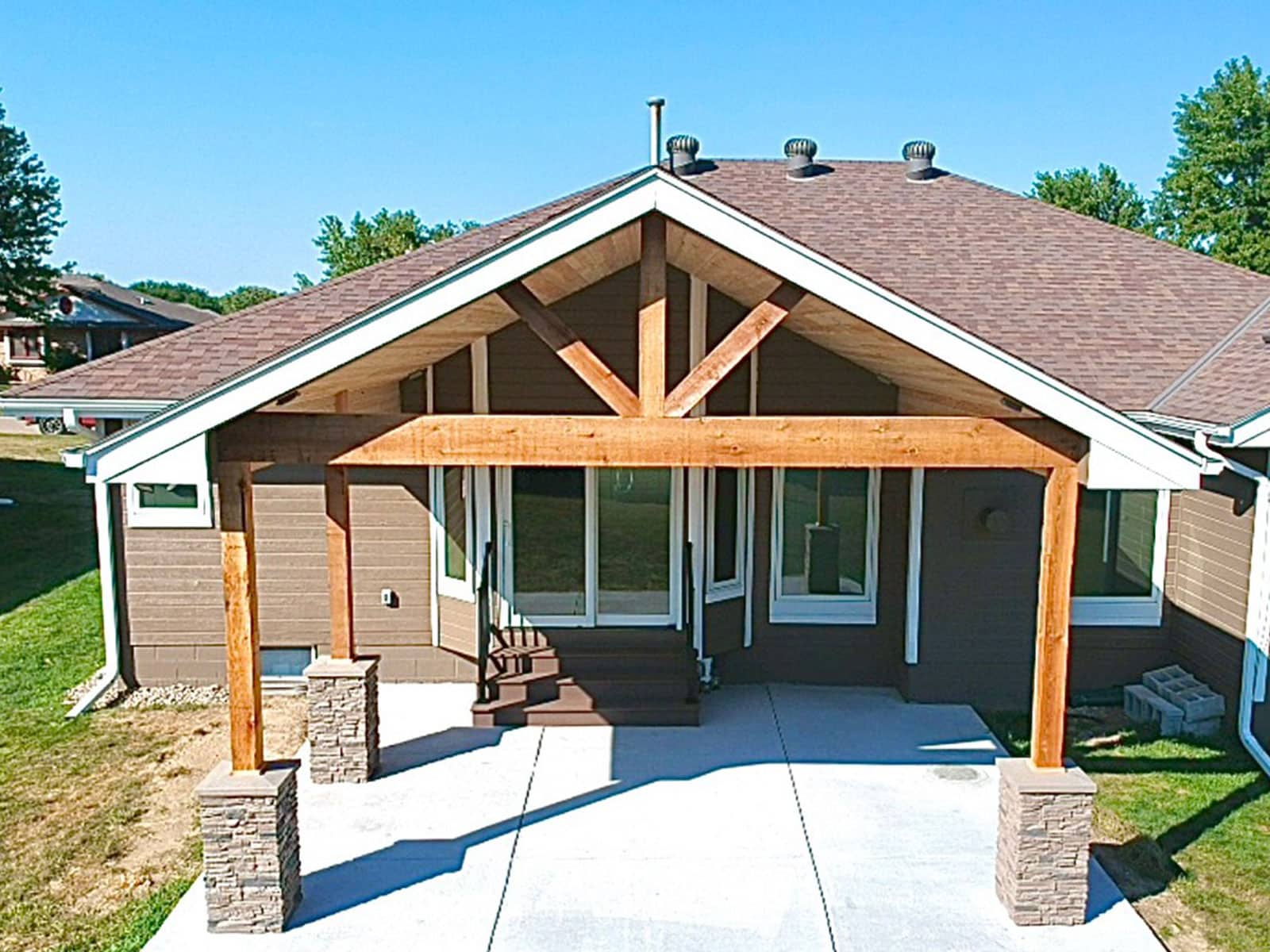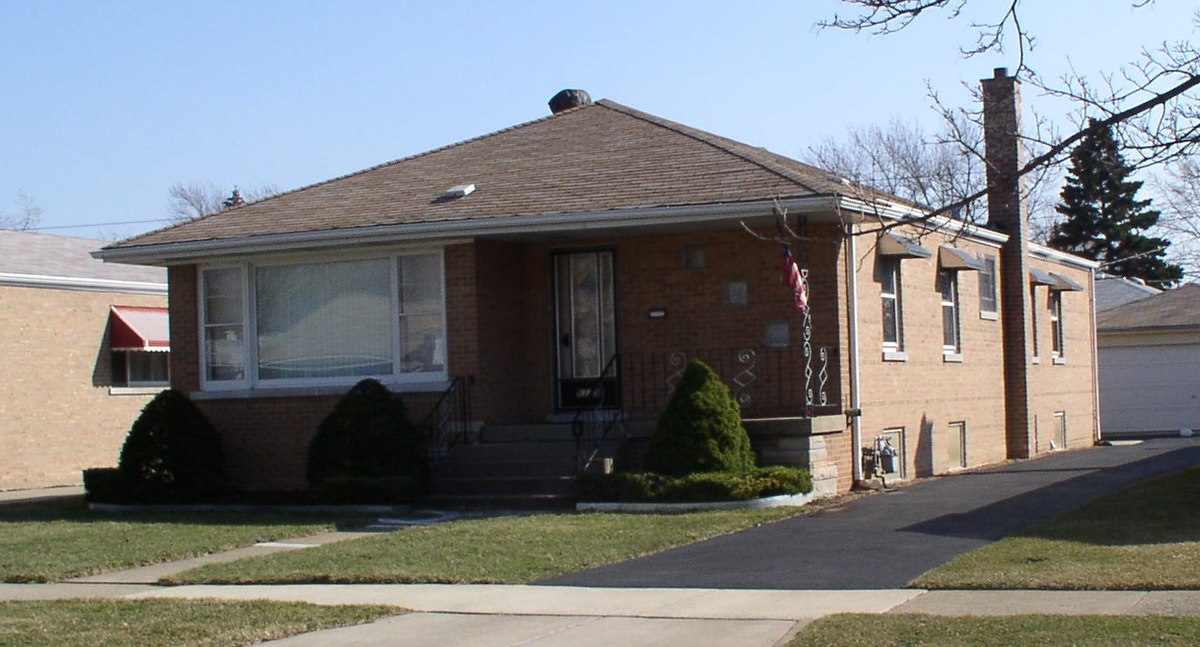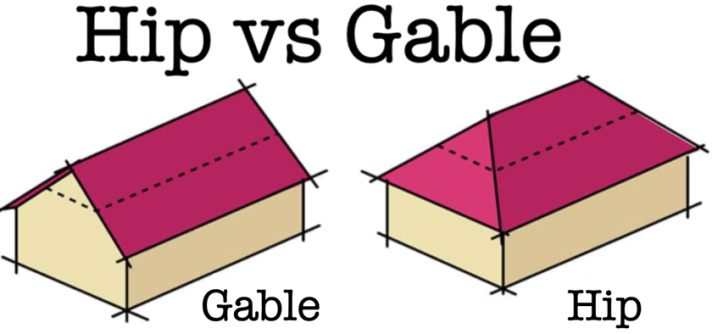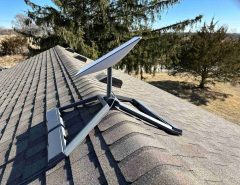Gable Roof Vs. Hip Roof: Which is Right for Your Home? Gable roofs have inward slopes on two sides and a triangular-shaped wall on the other two sides, allowing for maximum use of space inside the house.
On the other hand, hip roofs are sloped on all sides, making them more resistant to wind damage. However, hip roofs are more expensive to build compared to gable roofs as they require more materials and labor. Additionally, gable roofs may be at risk of peeling away in high winds and collapsing if not constructed properly.
Overall, the choice between Gable Roof Vs Hip Roof depends on factors such as budget, weather conditions, and desired aesthetic appeal.
Pros And Cons: Gable Roof
When it comes to choosing the right roof for your home, it’s essential to weigh the pros and cons of each option. In this section, we will explore the advantages and drawbacks of a gable roof. Understanding these factors will help you make an informed decision that suits your needs and preferences.

Advantages Of Gable Roof
There are several advantages to opting for a gable roof for your home:
- Simple Design: Gable roofs have a straightforward design, making them easier and quicker to construct. This simplicity also translates into lower labor and construction costs.
- Ample Attic Space: The steep slopes of a gable roof allow for more attic space, which can be utilized for storage or even converted into additional living space.
- Excellent Water Drainage: The sloping design of gable roofs ensures efficient water drainage, reducing the risk of leaks and water damage to your home.
- Efficient Ventilation: The triangular shape of a gable roof allows hot air to rise and escape through the ridge vent, promoting better air circulation and keeping your home cool.
- Aesthetic Appeal: Gable roofs offer a classic and timeless look that complements various architectural styles, adding curb appeal to your home.
Drawbacks Of Gable Roof
While gable roofs have numerous advantages, it’s important to consider their drawbacks as well:
- Prone to Wind Damage: Gable roofs can be susceptible to wind damage, especially during severe storms or hurricanes. The triangular shape of the roof creates a large area for wind to exert pressure, potentially leading to structural issues.
- Requires Regular Maintenance: Gable roofs may require more maintenance compared to other roof types. The sloping design can collect debris, leaves, and branches, which need to be regularly cleaned to prevent clogged gutters and potential water damage.
- Higher Construction Costs in Certain Areas: In regions with high wind or hurricane-prone areas, additional construction measures may be necessary to reinforce the gable roof, leading to increased upfront costs.
- Potential for Leaks: Gable roofs with improperly installed or damaged flashing can be more prone to leaks. Regular inspections and timely repairs are essential to ensure the longevity of your roof.
Now that you’re aware of the pros and cons of a gable roof, you can make an informed decision based on your specific requirements and the climate conditions in your area.
Pros And Cons: Hip Roof
When comparing gable roofs and hip roofs for your home, it’s important to consider the pros and cons. Gable roofs provide simplicity and cost-effectiveness, while hip roofs offer better stability and resistance to wind loads.

When it comes to choosing the right roof for your home, you may find yourself torn between a gable roof and a hip roof. Both have their own unique advantages and drawbacks, but in this section, we will specifically focus on the pros and cons of a hip roof. By understanding the benefits and limitations of a hip roof, you can make an informed decision that suits your preferences and the requirements of your home.
Advantages Of Hip Roof
There are several advantages to consider when it comes to a hip roof:
- Superior Wind Resistance: One of the key benefits of a hip roof is its excellent wind resistance. The sloping sides and low-pitched design make it more aerodynamic, reducing the chances of wind damage during storms or hurricanes.
- Enhanced Durability: Hip roofs are known for their durability. The inward slope of all sides allows for better weight distribution, making it more resistant to heavy snow loads and potential leaks.
- Improved Stability: Due to the four sloping sides, a hip roof is inherently more stable than a gable roof. This makes it less susceptible to structural issues and provides added peace of mind.
- Increased Energy Efficiency: The overhanging eaves of a hip roof provide shade and protection, which helps to reduce heat gain in the summer. This can result in lower cooling costs and improved energy efficiency for your home.
Drawbacks Of Hip Roof
While hip roofs offer various advantages, it’s important to consider their limitations as well:
- Higher Construction Costs: The complex design of a hip roof requires more building materials and labor compared to a gable roof. This can lead to higher construction costs.
- Limited Attic Space: The inward sloping sides of a hip roof may reduce the available attic space compared to a gable roof. If you need extra storage or living space, this could be a drawback.
- Increased Maintenance: The multiple slopes and valleys of a hip roof can make maintenance more challenging. Regular inspections and proper sealing of seams and valleys are necessary to prevent any potential water leakage.
In conclusion, a hip roof offers excellent wind resistance, enhanced durability, stability, and improved energy efficiency. However, it comes with higher construction costs, limited attic space, and increased maintenance requirements. Consider these pros and cons carefully before making a decision for your home.
Factors To Consider When Choosing
When it comes to choosing between a gable roof and a hip roof for your home, there are several factors that you need to consider. Each roof type has its own unique features and advantages that can impact the appearance, wind and airflow, durability, maintenance, and cost of your home. Understanding these factors will help you make an informed decision and choose the roof type that best suits your needs and preferences.

Appearance
The appearance of your roof plays a significant role in the overall aesthetic appeal of your home. Both gable roofs and hip roofs have distinct looks that can complement different architectural styles. A gable roof features two sloping sides that meet at a peak, forming a triangular shape at the top. This classic design is timeless and adds a sense of drama to your home’s exterior. On the other hand, a hip roof has slopes on all sides, forming a pyramid-like shape. This style offers a more contemporary and sleek look.
Wind And Airflow
Wind resistance and airflow are crucial considerations for your roof, especially in areas prone to strong winds and storms. Gable roofs are known for their susceptibility to wind damage due to their triangular shape. The large flat sides of the roof can catch wind and create uplift, potentially leading to roof damage. In contrast, hip roofs have slopes on all sides, which reduce the risk of wind damage by dispersing the wind evenly. Additionally, the hip roof design allows for better natural ventilation and airflow, making it an ideal choice for hot climates.
Durability
When it comes to durability, both gable and hip roofs can withstand varying weather conditions. However, hip roofs tend to be more durable due to their sloping design. The slopes of a hip roof evenly distribute the weight of the roof and eliminate any weak spots that may be prone to structural failure. This helps the roof withstand heavy snow, rain, and wind better than a gable roof. Gable roofs, although sturdy, may be more susceptible to damage in extreme weather conditions.
Maintenance
The maintenance requirements of your roof can significantly impact its lifespan and overall cost. Gable roofs are generally easier to maintain and repair compared to hip roofs. The simple design of a gable roof allows for easier access and cleaning. In contrast, hip roofs with multiple slopes and angles may require more frequent inspections and maintenance. Additionally, any repairs or replacements on hip roofs can be more complex and costly due to their intricate design.
Cost
Cost is always an important factor to consider when making any home improvement decision. In terms of cost, gable roofs are generally more budget-friendly compared to hip roofs. The simple and straightforward design of gable roofs requires fewer building materials and less labor, resulting in lower installation costs. Hip roofs, with their complex design and additional materials required for valleys and angles, can be more expensive to build. However, it’s important to consider that the long-term maintenance costs may vary depending on the specific materials and conditions in your area.
Overall, when deciding between a gable roof and a hip roof for your home, you should carefully evaluate the appearance, wind and airflow, durability, maintenance, and cost factors. Consider your specific needs, preferences, and budget to make an informed decision that will ensure the long-term protection and aesthetic appeal of your home.
Frequently Asked Questions For Gable Roof Vs. Hip Roof: Which Is Right For Your Home?
What Is The Best Roof Shape For A House?
The best roof shape for a house is a combination of gable and valley roofs. This design allows for maximum use of space inside the house while providing a classic look. Gable roofs have inward slopes on two sides and a triangular shape on the other two sides.
What Are The Disadvantages Of A Gable Roof?
Gable roofs have some disadvantages. They can peel away in high winds due to their overhang. There is also a risk of collapse if the roof frame is not constructed properly. Gable roofs are generally more prone to these issues compared to other roof types.
What Is Cheaper To Build A Hip Or Gable Roof?
A gable roof is cheaper to build compared to a hip roof. Hip roofs are more complex, requiring more materials and labor. Adding dormers creates seams and valleys, which need careful sealing to prevent water accumulation and leaks. Gable roofs are a more cost-effective option.
Are Hip Roofs More Susceptible To Wind Loads Than Gable Roofs?
Hip roofs are less susceptible to wind loads compared to gable roofs. This is because hip roofs have slopes on all sides, which allows wind to flow smoothly over the roof. On the other hand, gable roofs present larger obstacles to wind due to their ends.
Conclusion
Overall, when deciding between a gable roof and a hip roof for your home, it’s important to consider your specific needs and priorities. While gable roofs offer simplicity and cost-effectiveness, hip roofs provide better wind resistance and a more visually appealing design.
Additionally in the Gable Roof Vs Hip Roof comparison, hip roofs are known for their durability and longer lifespan. Ultimately, the choice between the two styles will depend on your personal preferences, budget, and location. Whether you opt for a gable roof or a hip roof, both options can provide a functional and stylish solution for your home’s roofing needs.
Tags: gable roof, hip roof, home design, roof comparison, roofing styles



